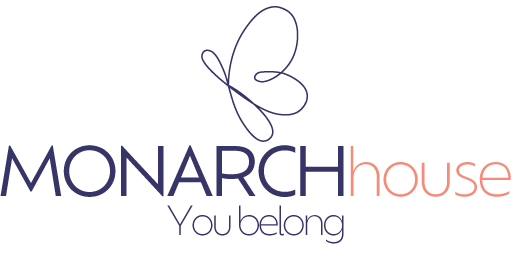Ten Ways Autism Is Linked To Genetics
Nurture or nature? Or rather, to what extent? This is a question that arises with every developmental condition When it comes to autism, there’s significant research to prove that there’s a definite genetic (or nature) component. Autism Spectrum Disorder (ASD) is a complex neurodevelopmental condition characterized by differences in communication, social interaction, and repetitive behaviours. However, while research has shown that genetics do play a significant role in its development, the exact causes of autism are not fully understood.
Here are ten ways that autism is linked to genetics.
- Twin Studies
If you share the same genes, your chances of sharing ASD go up as well. Twin studies have been enormously useful in helping to understand the genetic basis of autism. Research has found that if one identical twin has autism, there is a 70% to 90% chance that the other twin will also have the condition. In contrast, fraternal twins, who share about 50% of their genes, have a much lower concordance rate, suggesting a strong genetic influence.
- Genetic Mutations
You can tell your child that there is a link between autism and X-men. They might share some mutant blood. Several genetic mutations that are associated with autism have been found in recent scientific research. Some of these mutations are inherited, while others may occur spontaneously (de novo mutations) in the sperm or egg cells of the parents. These mutations occur in various genes involved in brain development and function.
- Heritability Of Autism
If a parent has autism, the chances that their children have autism is significantly higher than the baseline. Studies show that heritability estimates range from 50% to 90%, suggesting that autism has a strong genetic component. In layman’s terms, this means that the risk of developing autism is mostly inherited. If one child in the family has autism, the odds of a sibling also being diagnosed with the condition are much higher compared to the general population.
- Copy Number Variations (CNVs)
Autism can be hardwired as code. Copy number variations (CNVs) are segments of DNA that are either duplicated or deleted. Some of these CNVs have been associated with an increased risk of autism. For example, deletions or duplications in specific regions of chromosomes, such as 16p11.2, have been associated with autism. These CNVs can disrupt normal brain development and function, contributing to the onset of ASD.
- Gene-Environment Interactions
Nurture does have an influence as well. While nature (genetics) plays a huge role in the development of autism, environmental factors (such as medications and diet) also have a way of interacting with genetic predispositions. There is an increased susceptibility to environmental influences with certain genetic mutations. One example is prenatal exposure to toxins or infections. This has been shown to elevate the risk of developing autism.
- Familial Clustering
You only need to look as far as the family tree to see the link between autism and genetics. Autism tends to cluster in families. It’s not uncommon to see several family members across several generations with similar neurodiversity or related conditions, such as language delays or social difficulties. Inherited genetic factors that contribute to the risk of autism are strongly suggested by this familial clustering, even if the exact genes involved may vary from one family to another.
- Rare Genetic Syndromes
Sometimes having one disorder can put you at greater risk for another. For example, certain rare genetic syndromes are associated with a higher risk of autism. Scientists have found well established links to autism in the genetic conditions found in Fragile X syndrome, Rett syndrome, and tuberous sclerosis. It’s not uncommon for these syndromes to involve mutations in specific genes that affect brain development. These mutations can lead to autism as one of their symptoms.
- Whole-Exome and Whole-Genome Sequencing
While there is not a single gene that scientists can pinpoint as the source of autism, there are definitely combinations of genes that might be the culprit. Whole-exome and whole-genome sequencing, as well as other advances in genetic sequencing technologies, have allowed researchers to identify rare genetic variants associated with autism. These studies have found evidence of the complex genetic underpinnings of the condition by uncovering hundreds of genes that may contribute to ASD.
- Epigenetics
Nature and nurture both play a hand in the event of epigenetics. These are changes in gene expression that do not involve any kind of alterations in the DNA sequence itself. Research has shown that epigenetic modifications, such as DNA methylation, can influence the development of autism. Some of these epigenetic changes are inherited, while others can be triggered by environmental factors.
- Polygenic Risk Scores
There are several genes, working together, that are on researchers’ Most Wanted list. Autism is thought to be a polygenic condition, meaning that multiple genes contribute to the overall risk of developing the disorder. By analyzing the combined impact of these variants, researchers can better understand the genetic architecture of autism and how it contributes to the condition. In this way they can quantify the cumulative effect of many genetic variants on an individual’s risk of autism.
There is a genetic link to autism. Scientists have found that the link between autism and genetics is complex and nuanced, and a thorough analysis involves looking at a combination of inherited and spontaneous genetic factors. While it has been shown that there is not a single gene that causes autism, there is a substantial body of research that highlights the significant role that genetics plays in the development of ASD in other ways (such as heredity and epigenetics). Our understanding of the genetic basis of autism continues to evolve. This opens new doors for targeted interventions, early diagnosis, and personalized treatment approaches. It will take some time, but ultimately, scientific discovery will lead to improving outcomes for individuals with autism and their families.


